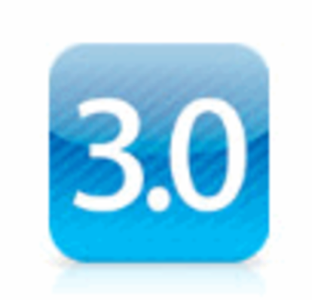2009 has been a big year for mobile and real-time technologies, which is reflected in our selection of the top 10 Web platforms of the year. It’s the final instalment of our series of top products of 2009.

As we noted in last year’s round-up, a web platform can be as simple as an API (like Twitter’s) that allow external developers to tap into a company’s data. It can also be software and services, like Amazon’s Web Services. Or it can be a fully fledged development platform, such as iPhone SDK and Adobe AIR. Whatever the case, platforms on the Web allow people to build on top of another company’s product, so we think it’s an appropriate way to close our Top Web Products series.
ReadWriteWeb’s Best Products of 2009:
As Twitter‘s director of platform, Ryan Sarver, repeatedy pointed out during his presentation at this year’s LeWeb that Twitter and its ecosystem of third-party developers have a highly symbiotic relationship. Twitter’s APIs are still rate-limited and Twitter won’t make the full firehose of feeds available to all of its developers until early 2010. There can be no doubt, however, that Twitter has managed to create one of the most vibrant developer communities around its platform.

Over the course of the year, Twitter introduced a number of new APIs, including a geolocation API that makes it easy to attach geodata to a tweet, and the controversial retweet API. With Twitter Connect, Twitter also released a competitor to Facebook Connect, although this tool hasn’t found widespread adoption yet.
Just like Twitter, Facebook‘s success has increasingly become dependent on the third-party ecosystem that has grown up around the Facebook platform. According to Ethan Beard, who manages development of the Facebook Platform, over 500,00 applications have been developed on top of the Facebook platform and over 250 million users use at least one of these.

The Facebook platform is not just about letting users play games like Farmville and or novelty apps like SuperPoke. Facebook Connect, for example, is becoming increasingly popular as a sign-in mechanism on third-party sites. Over 80,000 sites now utilize Facebook Connect, 60 million Facebook users use it and two-thirds of all the sites in the Comscore 100 index currently use it.
WordPress.org
Without any doubt, the world of blogging would look very different today if it wasn’t for Automattic’s open-source version of WordPress. The core open-source WordPress project is driven by a passionate group of developers, but a majority of development happens in the community that builds plugins for WordPress.

Earlier this year, WordPress released version 2.8 of its self-hosted product – a major overhaul of its core product. It includes a new interface and new options for plugin developers, including the ability to install and search for plugins from within the admin interface. Among some of the most popular WordPress plugins are an image gallery, an SEO tool and an analytics package.
iPhone
We admit that our choice of the iPhone as a top web platform could be somewhat controversial. After all, Apple’s less than efficient approval system and the closed nature of the platform have even led some developers to abandon development for the iPhone altogether.

There can be little doubt, however, that Apple has created one of the most successful mobile developer programs. The App Store now features over 100,000 applications and an increasing number of web services now offer versions of their products that are specifically geared towards the iPhone’s Safari browser.
This year, Apple extended the SDK with a number of new and improved features when it released version 3.0 of the iPhone OS. These updates include better support for 3D gaming, augmented reality apps, easier access to maps, in-app purchases and support for push notifications.
Android
Android came of age in 2009. It was still a relatively unknown mobile operating system in the consumers’ conscience in 2008, but this year not only saw a large increase in developer activity, but also a strong interest in Android phones like the Motorola Droid.

Thanks to the open-source nature of the project, Android made it easy for developers of augmented reality applications to test their ideas long before Apple offered the necessary APIs on its platform. While the Motorola Droid features Android 2.0 already, most other manufacturers don’t offer this update for their customers yet.
Data.gov
2009 saw a number of interesting developments in the Government 2.0 movement. One of the most high-profile backers of this movement was – surprisingly – the U.S. government. With Data.gov and similar government projects that feature APIs, developers can now find a wealth of information that was previously hard to access.

By providing API access to this data, the U.S. government has opened itself up to more scrutiny, as citizens can now analyze this data with unprecedented ease.
New York Times APIs
No other news organization offers as many APIs as the New York Times – although the Guardian’s Open Platform was also a strong candidate for this list. Over the course of this year, the New York Times opened up an API for accessing an archive of all the paper’s stories since 1981 and APIs to access information about the U.S. Congress and the New York State legislature.

There can be little doubt that the newspaper industry needs to find new ways to monetize its product. For some papers, this has meant making it harder for consumers and developers to mash up their content. The New York Times, however, has decided that increased openness is a better strategy. [disclosure: RWW syndicates content to NYT]
Google App Engine
With App Engine, Google gives developers an easy way to develop and deploy cloud applications through a comprehensive set of services and APIs. This year, Google introduced Java as an additional language in the App Engine’s repertoire. App Engine now also supports XMPP, which has allowed a number of developers to create services that push real-time updated to IM clients or third-party applications.

In addition, Google also announced a pricing structure for App Engine in February.
In November, Google had to face some negative publicity around App Engine when it became known that some hackers were using the service to host a bot net. Overall, however, the service has not suffered from any major security issues so far.
Azure
Azure is Microsoft’s big push towards cloud computing. While it is still too early to judge the success of this platform, we think it would be wrong to underestimate Microsoft’s commitment to this space and the size of its developer ecosystem. While Amazon and RackSpace’s cloud services are clearly more popular than Microsoft’s new service, there can be little doubt that the arrival of Microsoft in this market will help to push the incumbents towards more innovation.

Adobe AIR
While Adobe AIR is nowhere near perfect, very few other platforms have the same cross-platform reach as AIR. It allows developers to create one application and distribute it for all the major operating systems. Thanks to its auto-updating features, AIR also makes it easy for developers to keep their install base up to date.

This year, Adobe launched AIR 2, which now allows developers to access mass storage devices, drag-and-drop support for remote files and rudimentary support for P2P networking. In addition, AIR 2 also enables developers to use the multi-touch capabilities of modern screens.
Those are our picks! In the comments let us know your thoughts or what we may have missed.











